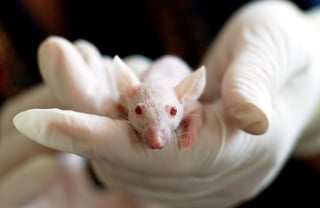Share this
4 top methods of blood collection in lab rodents
by Neoteryx Microsampling on Feb 9, 2017 7:41:00 AM
 The methods of blood collection in lab mice and rodents can have varying effects on the animals. The sample collection methods may require anesthesia or restraint, depending on the area from which the blood is taken. Certain areas produce more blood during collection, and guidelines prescribe the total amount of blood that can be drawn from a mouse or rodent via each method.
The methods of blood collection in lab mice and rodents can have varying effects on the animals. The sample collection methods may require anesthesia or restraint, depending on the area from which the blood is taken. Certain areas produce more blood during collection, and guidelines prescribe the total amount of blood that can be drawn from a mouse or rodent via each method.
With all animal studies, it is important to use the least invasive sampling methods available to minimize impact on the animals, while still obtaining the data necessary for scientific analysis.
Here we describe the top four methods of blood collection in lab mice and rodents.
1. Venous blood draws from the lateral tail vein or the submandibular vein
Are usually taken while a mouse or rodent is restrained but not anesthetized. Both of these methods require special equipment, and a lateral tail vein draw yields only a small quantity of blood. The submandibular vein is preferred because it's ideal for serial sampling and can draw a moderate amount of blood.
2. Saphenous or retro-orbital vein collection
Is another way. Both of these collection sites require additional preparation and skill. Extraction from the saphenous vein requires great skill to consistently draw a measurable amount of blood.
Because of the extensive site preparation, the mouse might be more traumatized with this method due to prolonged restraint. The retro-orbital vein can provide medium or large volumes of blood, but the mouse must be monitored within two days after blood collection because complications can happen.
3. So-called "terminal" or "non-survival" blood collection
Is done either pre- or post-mortem and only after the mouse has received surgical anesthesia. Terminal collection can be taken via cardiac puncture and can collect the maximum amount of blood. It can also be done via the aorta or vena cava. Immediately after the blood collection via either of these two methods—and before the mouse recovers from the anesthesia—the mouse must be euthanized.
4. Microsampling: the 3R blood collection method
With microsampling, a very small volume of blood is taken after the mouse or rodent receives local anesthesia. Volumetric absorptive microsampling technology enables consistent and accurate blood volume collection (roughly 10 microlitres). Because this is a small-volume blood collection approach, a single animal can be sampled from more frequently with less impact on their health.
Mitra® devices based on VAMS® technology provide high-quality and quantitative data while simplifying the blood collection process and the lab procedures required for testing.
The hydrophilic VAMS tips on the Mitra sampling devices fill after 2-5 seconds of contact with a small amount of blood. This simplifies the sampling method and standardizes the sample volume.
Some lab researchers have reported that microsampling is not the preferred extraction method when taking samples from rodents that have tumors or when technical replicates are required.
Learn more about microsampling for animal studies by visiting our Preclinical Research / Animal Studies resource page:

Share this
- Microsampling (206)
- Research, Remote Research (119)
- Venipuncture Alternative (105)
- Clinical Trials, Clinical Research (83)
- Mitra® Device (73)
- Therapeutic Drug Monitoring, TDM (51)
- Dried Blood Spot, DBS (39)
- Biomonitoring, Health, Wellness (30)
- Infectious Disease, Vaccines, COVID-19 (24)
- Blood Microsampling, Serology (23)
- Omics, Multi-Omics (21)
- Decentralized Clinical Trial (DCT) (20)
- Specimen Collection (18)
- Toxicology, Doping, Drug/Alcohol Monitoring, PEth (17)
- Skin Microsampling, Microbiopsy (14)
- hemaPEN® Device (13)
- Preclinical Research, Animal Studies (12)
- Pharmaceuticals, Drug Development (9)
- Harpera Device (7)
- Industry News, Microsampling News (5)
- Antibodies, MAbs (3)
- Company Press Release, Product Press Release (3)
- Environmental Toxins, Exposures (1)
- July 2025 (1)
- May 2025 (1)
- April 2025 (2)
- December 2024 (2)
- November 2024 (1)
- October 2024 (3)
- September 2024 (1)
- June 2024 (1)
- May 2024 (1)
- April 2024 (4)
- March 2024 (1)
- February 2024 (2)
- January 2024 (4)
- December 2023 (3)
- November 2023 (3)
- October 2023 (3)
- September 2023 (3)
- July 2023 (3)
- June 2023 (2)
- April 2023 (2)
- March 2023 (2)
- February 2023 (2)
- January 2023 (3)
- December 2022 (2)
- November 2022 (3)
- October 2022 (4)
- September 2022 (3)
- August 2022 (5)
- July 2022 (2)
- June 2022 (2)
- May 2022 (4)
- April 2022 (3)
- March 2022 (3)
- February 2022 (4)
- January 2022 (5)
- December 2021 (3)
- November 2021 (5)
- October 2021 (3)
- September 2021 (3)
- August 2021 (4)
- July 2021 (4)
- June 2021 (4)
- May 2021 (4)
- April 2021 (3)
- March 2021 (5)
- February 2021 (4)
- January 2021 (4)
- December 2020 (3)
- November 2020 (5)
- October 2020 (4)
- September 2020 (3)
- August 2020 (3)
- July 2020 (6)
- June 2020 (4)
- May 2020 (4)
- April 2020 (3)
- March 2020 (6)
- February 2020 (3)
- January 2020 (4)
- December 2019 (5)
- November 2019 (4)
- October 2019 (2)
- September 2019 (4)
- August 2019 (4)
- July 2019 (3)
- June 2019 (7)
- May 2019 (6)
- April 2019 (5)
- March 2019 (6)
- February 2019 (5)
- January 2019 (8)
- December 2018 (3)
- November 2018 (4)
- October 2018 (7)
- September 2018 (6)
- August 2018 (5)
- July 2018 (8)
- June 2018 (6)
- May 2018 (5)
- April 2018 (6)
- March 2018 (4)
- February 2018 (6)
- January 2018 (4)
- December 2017 (2)
- November 2017 (3)
- October 2017 (2)
- September 2017 (4)
- August 2017 (2)
- July 2017 (4)
- June 2017 (5)
- May 2017 (6)
- April 2017 (6)
- March 2017 (5)
- February 2017 (4)
- January 2017 (1)
- July 2016 (3)
- May 2016 (1)
- April 2016 (2)


Comments (4)